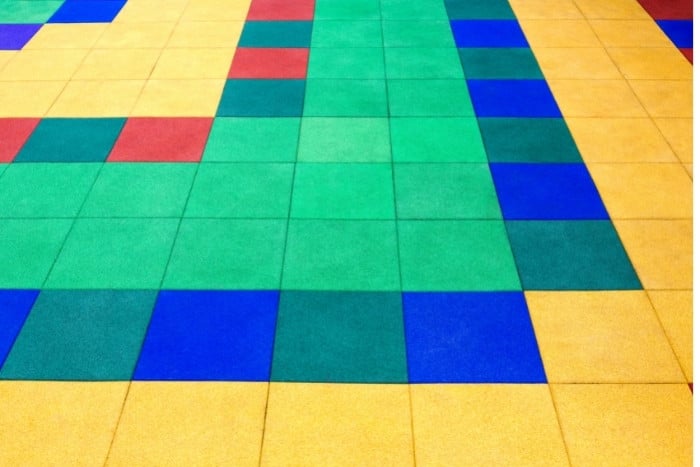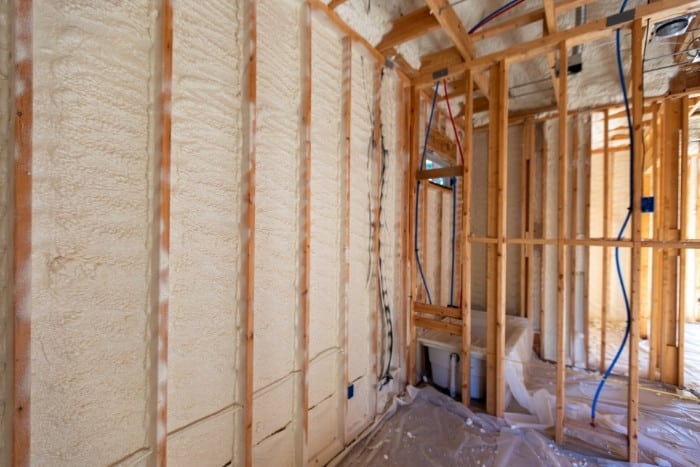Ice fishing isn’t an activity that’s considered to be overly active. Once your equipment setup is complete, most of your time is spent in your shelter waiting for the fish to strike. As a result, it’s easy to feel the cold seeping into your shelter as you wait for action.
Insulating an ice fishing shelter can be done with various things ranging from foam board and carpet to Reflectix. Depending on the shelter style, there are different types of methods and materials that will best trap heat. The floors, walls, and roof all need to be covered as best as possible.
Insulating your shelter doesn’t have to be complicated or expensive if you’re willing to do some research and work.
Insulating a Portable Ice Fishing Shelter
Portable ice fishing tents have many positive features. However, they don’t always do a great job trapping the heat your heater and body are producing.
Even the shelters with insulated fabric don’t get as warm as they could. Fabric walls will never be the best material for trapping air.
As a result, you may need to add a few more materials to keep things comfortable.
1. Start With the Floor
If you’ve ever spent a night sleeping on the ground, you know how important it is to have something under you.
Cold air seeps from the ground and can chill you to the bone, which is especially true if you’re spending time on the ice.
Portable ice shelters rarely have a built-in floor, so the cold from the ice almost immediately fills the entire shelter. As a result, your heater can only do so much to keep you comfortably warm.
Insulating the floor of your tent can easily be done with old carpet or rubber floor tiles.
The rubber floor tiles that easily connect like puzzle pieces are your best option. They’re easy to find and highly affordable. Rubber floor tiles are able to absorb water and dry out far more quickly than old carpet.
Plus, they’re light, so if you carry out the insulation on your sled, you won’t even notice they’re there. If you have some old carpet lying around, cut out a piece of it to sit on the floor in between your holes.
This way, when you’re walking around and sitting, you’ll have the comfort of something between your feet and the ice.
You’ll notice an immediate difference when you put something on the floor. As a result of your efforts, you won’t feel the cold in your feet, and your body will stay comfortable.

2. Use Reflectix on the Walls and Ceiling
Reflectix is a material that looks like thick tin foil and bubble wrap mixed. A variety of companies make Reflectix, and it’s relatively affordable. Plus, Reflectix has an R-Value of somewhere between R-3 and R-17.
R-Value is the ability insulation has to trap air inside of an area. The higher the R-Value of something, the more heat it can trap.
Some anglers cover the entire inside of their shelter with Reflectix material, and others only pick specific places. Attach some velcro patches to the walls of your shelter and the back of your Reflectix.
This way, it’ll stay attached to the walls without you having to reattach it before every use. You can also choose to attach it to the ceiling of your shelter.
Since heat rises, it often escapes out of the roof of a portable shelter. Some Reflectix attached to the inside of your roof will keep warm air circulating throughout the rest of the shelter.
With Reflectix attached to the walls and roof and proper flooring, you’ll be pretty comfortable in your shelter despite the low temperatures outside.
Insulating an Ice Fishing Trailer
If you own a trailer that you hope to turn into an ice fishing shelter, then you have a few options in terms of insulation. It’s important not to skimp on your insulation.
A lack of insulation on your floors and walls can make the experience incredibly uncomfortable. Insulate as much of the trailer as possible. The cold will find its way inside in any way it can.
1. Floor Insulation
Insulating the floor of your ice fishing trailer can be done in a few ways. Most people use plywood as the base of their floor, but throwing it on top of the metal frame will not be enough to keep you warm.
The easiest option is to use 2” Foam board panels that you lay on the floor between the metal frame and plywood. You can easily cut through it when creating holes in your frame’s bottom.
Some choose to lay Reflectix on the metal frame before they lay down the foam board. It’s an added element of warmth.
Another available option when insulating your trailer is to use closed-cell spray foam. Closed-cell spray foam is made up of tiny cells that are packed together. Once it dries, it’s hard and will not expand.
Using spray foam on the floor can be very messy, but it’s hard to beat its efficiency. It truly does make a difference. Plus, it is excellent at repelling moisture.
2. Wall and Ceiling Insulation
When you’re ready to insulate the walls and ceiling, one of the best options is going to be closed-cell spray foam. On average, it has an R-Value of somewhere around 6.5 per inch.
Few materials on the market have an R-Value that high. Plus, closed-cell spray foam is water-sealing and will repel the moisture that inevitably will seep inside your trailer.
The final benefit is that it will add structural integrity to your trailer. Once it fully hardens, the walls become extremely rigid.
It’ll fill every crack and crevice of the walls of your trailer, so you don’t have to worry about any air gaps that allow cold air to enter.
The other choice you have is to use some of the 2” Rigid Board. If your walls and ceiling are completely flat, then this is an easy thing to use.
However, most trailers have a slight bend in the walls, so fitting the foam board to the curvature isn’t always easy. You’ll have to cut sections to specifically fit the walls of your trailer.
It’s fairly easy to use and attach to the wall of your trailer, and it is fairly effective. It has an R-Value of 5 per inch. There can be air gaps, and you won’t be able to stuff the boards into air gaps.
If moisture gets into any of the air gaps between the walls of your trailer and the insulation, the foam board can easily mold, so make sure you’re particular about how it sits in the walls and ceiling.

Conclusion
Ice anglers should never underestimate the power of staying warm. A warm ice shelter can keep people on the water for hours longer than usual.
To fully insulate your shelter takes some extra work, but the benefits will be worth it in the long run.
Whether you choose to use Reflectix, foam board, or spray foam, make sure it’s in the proper places and fully secure.
You want to spend your time on the water fishing instead of having to fix any minor deficiencies. When in doubt, add more insulation!
It’s never a bad thing to have to remove layers of clothing while you’re out on the ice.
